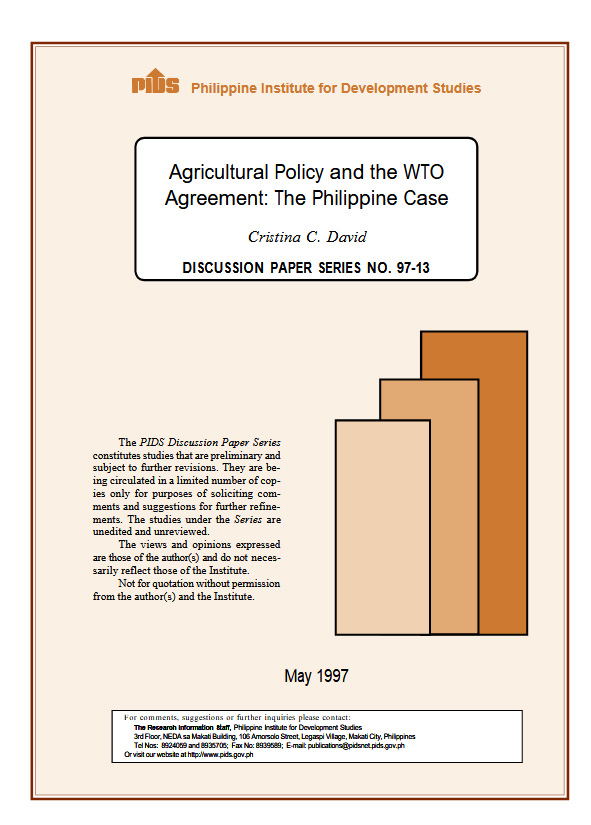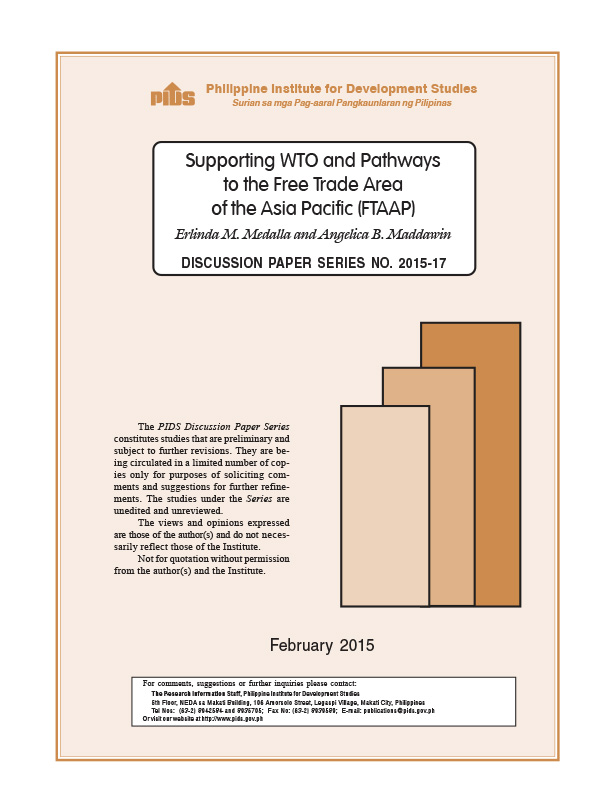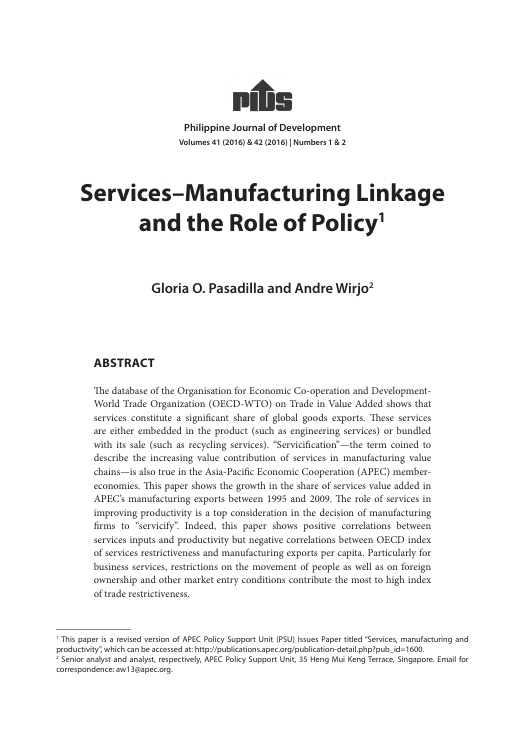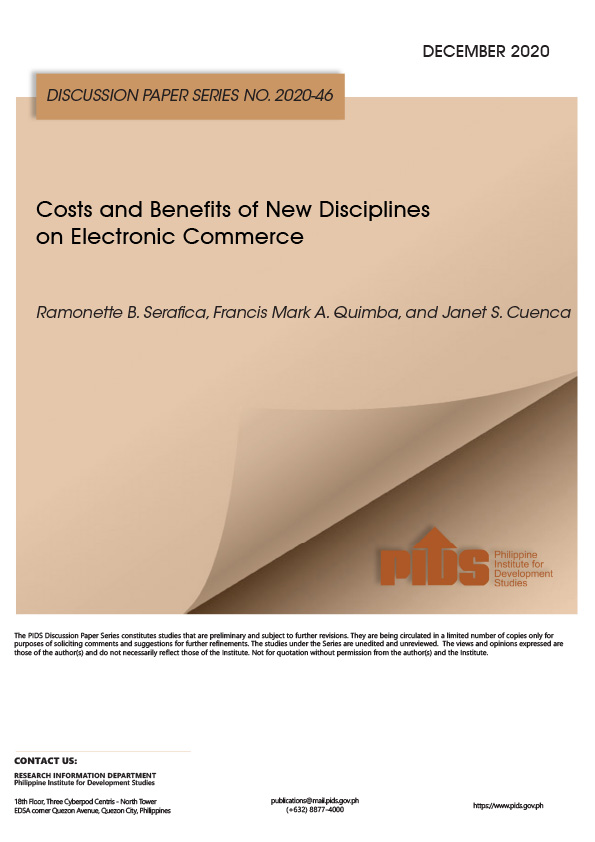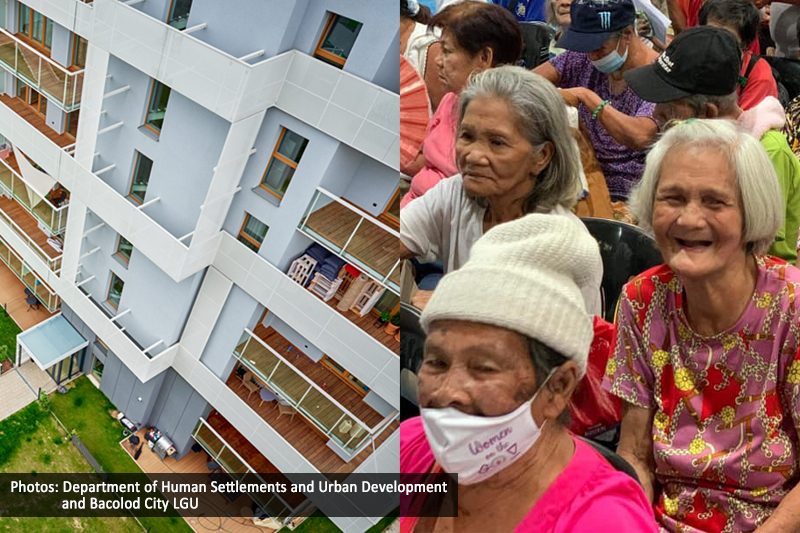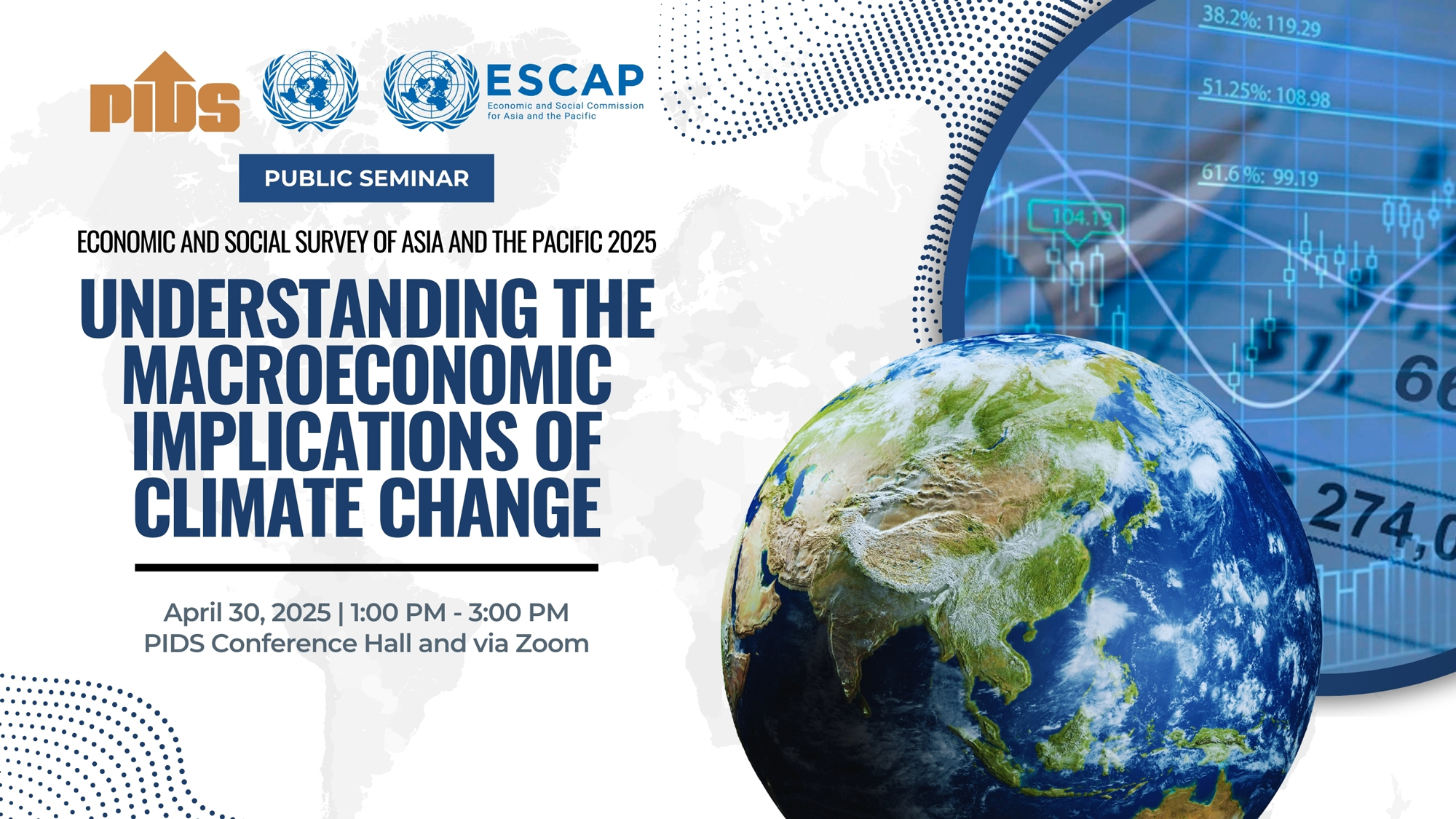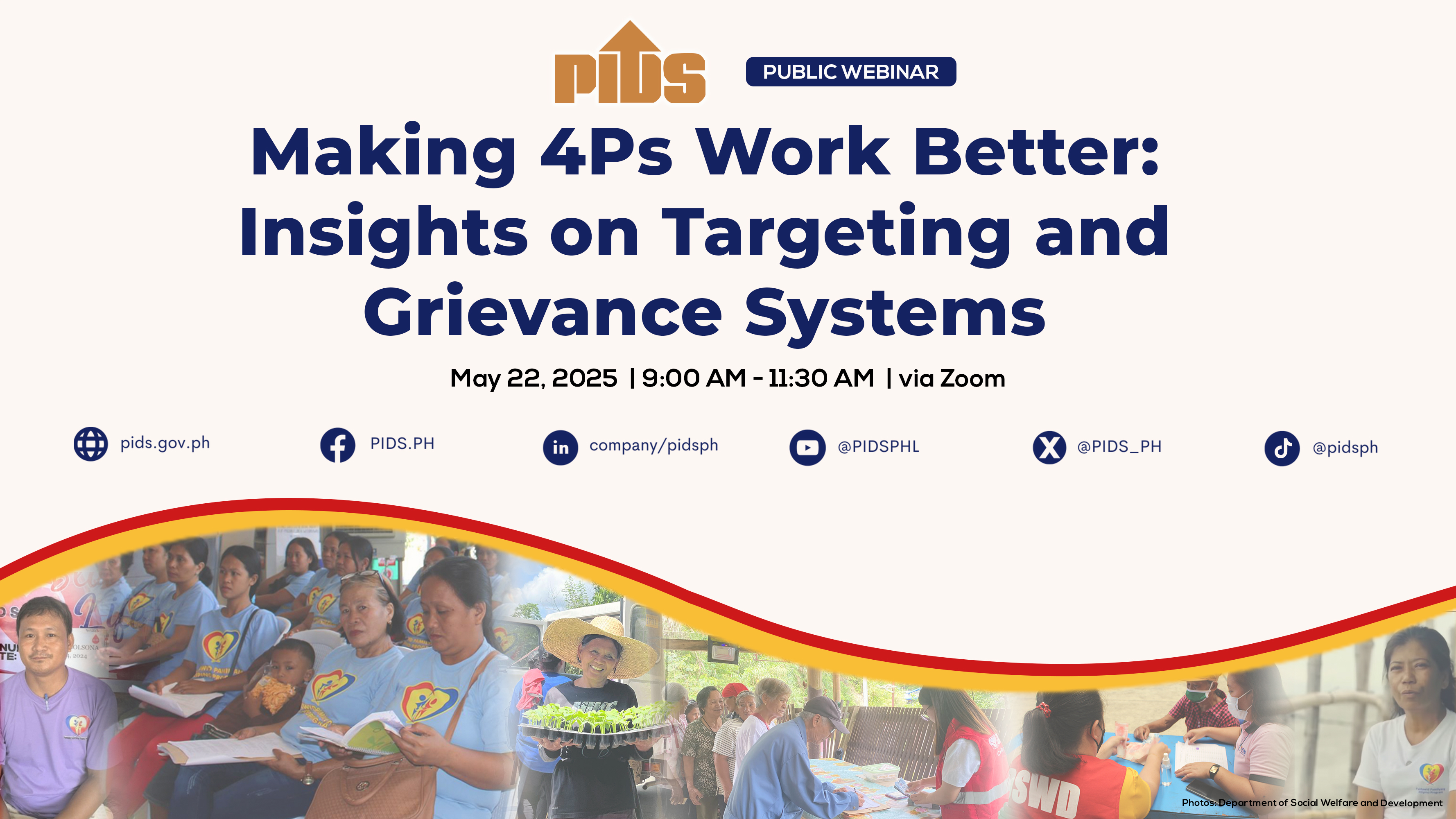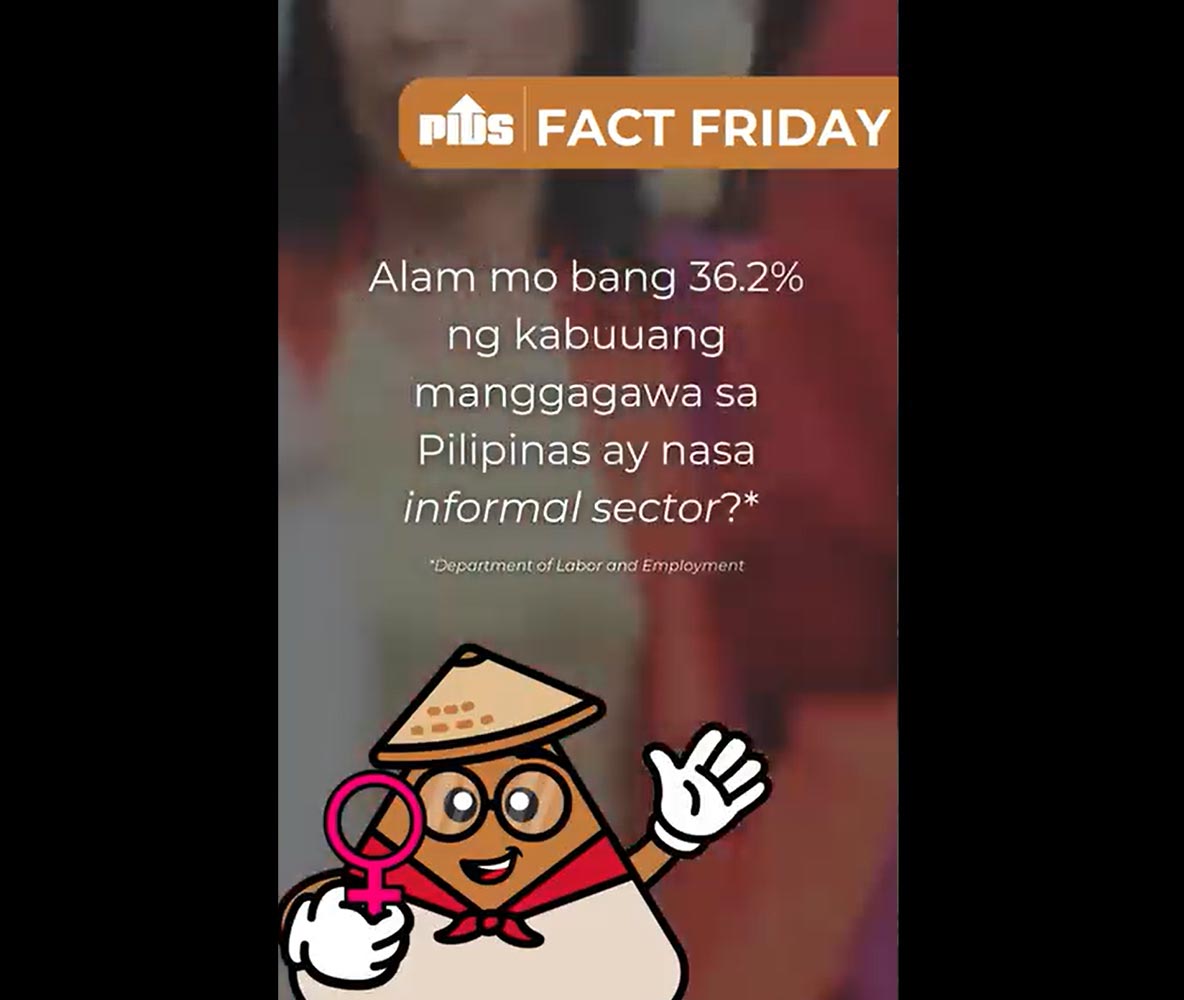The growth of the Philippine economy has been erratic since 1980鈥檚. It is only until recently that it shows signs of catching up with the progress of its fellow Asian countries. Whether its recovery is sustainable at the aggregate level remains largely a question. Agriculture sector, however, is still bereft of such development exhibiting not only a fluctuating but also a relatively dismal performance. Comparison of Asian countries indicates that the Philippines have the most severe and most prolonged decline in the gross value added in agricultural exports. This is suspected to be due to the differences in the policy and institutional structures governing the sector. This paper analyzes the changing nature of price intervention and public expenditure policies affecting agriculture, the implications of WTO agricultural agreement on these policies and the factors in the political economy that help shape the nature of agricultural policies. Analysis shows price distortion and protection result to economy-wide inefficiencies through high consumer prices. The non-discriminating choice of policy instruments translates to inefficiency as well.
Citations
This publication has been cited 5 times
- Cororaton, Caesar B., John Cockburn, and Erwin Corong. 2005. . MTID discussion papers 86. International Food Policy Research Institute (IFPRI).
- Cororaton, Caesar B., John Cockburn, and Erwin Corong. 2005. . Policy Research Working Paper Series 3738. The World Bank.
- Cororaton,Caesar B., John Cockburn, and Erwin Corong. 2005. . Working Papers MPIA 2005-03. PEP-MPIA.
- Lasco, Christine D., Robert J. Myers, and Richard H. Bernsten. 2008. . Agricultural Economics, 38, no. 3, 339-348. International Association of Agricultural Economists.
- World Bank. 2000. . World Bank Publications - Reports 15142. The World Bank Group.

